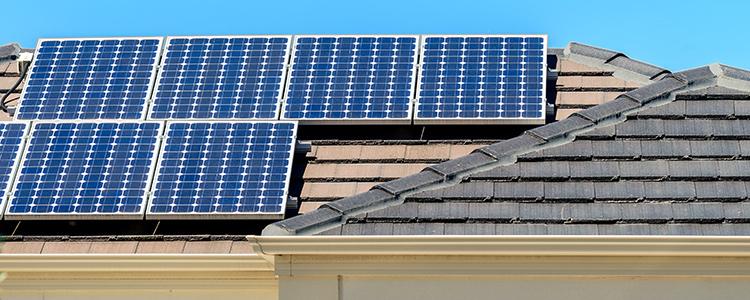When considering the installation of solar energy in your home, one of the first questions you might ask is: ‘Is my roof suitable for solar panels?’ This question is crucial as the characteristics of the roof can significantly impact the efficiency and effectiveness of the solar panel system. In this blog, we will explore the various factors that determine whether a roof is suitable for solar panel installation.
How to Determine if Your Roof is Suitable for Solar Panels? To determine if your roof is suitable for solar panels, you need to consider factors such as roof materials, angle, size, shading, and structural integrity. The following six factors can help you easily determine if your roof is suitable for solar installation:
To meet a demand of 5 kilowatt-hours, you would require approximately 20 solar panels.
Should you need more power, consider our method for calculating the number of solar panels needed.
For a typical residential system consisting of 20 panels, you would need about 350 square feet of roof space.
However, total area is only part of the equation—the shape of the roof plays a significant role as well.
A roof with multiple slopes, chimneys, skylights, or vents can limit the available space for panels.
A simple rectangular roof is ideal, but even more complex shapes can accommodate solar panels with proper planning.
Roof age and condition: Most solar panels come with a warranty of about 25 years, and if well-maintained, they can last even longer.
If your roof is nearing the end of its life—say, with only 10 years left—you may want to think twice before installing solar panels.
The last thing you want is to invest in solar energy only to have to replace the roof soon after.
If your roof is old and in need of replacement, this could actually be a good opportunity to upgrade to a roof more suitable for solar.
Consider materials like asphalt shingles or metal, which are both durable and solar-friendly.
Replacing the roof now means you won’t have to deal with the hassle and cost of removing and re-installing solar panels later.
Roof shading: Even if the size, angle, and orientation of the roof are perfect, shading can significantly impact the effectiveness of solar panels.
Trees, chimneys, or nearby buildings can block sunlight, and even a small amount of shading can reduce the energy produced by solar panels.
There are two types of shading to be aware of: partial shading, where only part of the panels are shaded; and full shading, where an entire section of the roof is blocked.
Shading is most problematic during the early morning or late afternoon when the sun is low, but it can affect your system at any time of the day.
The good news is that even if shading is an issue, solutions such as micro-inverters or trimming trees can help to minimize the impact.
Roof sun exposure: For optimal energy production, it is best if your roof receives direct sunlight from 9 am to 3 pm.
This time frame is when the sun is at its highest point in the sky, allowing solar panels to utilize sunlight to the greatest extent.
If your roof can consistently enjoy sunlight during these hours, you will have an efficient solar energy experience.
To assess the amount of sunlight your roof receives, you can use various tools and resources.
One useful tool is the National Renewable Energy Laboratory (NREL) Solar Resource Map, which provides detailed information about the solar potential in your area.
Furthermore, Google’s Project Sunroof can help you assess the amount of sunlight your roof receives based on satellite images and data. What if my roof is not suitable for installing solar panels? If you have evaluated your roof and found it unsuitable for installing solar panels, don’t lose hope! You can consider several alternative options to effectively utilize solar energy. Ground-mounted solar systems. One of the best alternatives is to install a ground-mounted solar system. These systems can be placed in the yard or other sunny open spaces. Ground-mounted systems offer more flexible positioning, allowing you to avoid shading issues and optimize sunlight. They are also easier to maintain and clean than roof-mounted panels. Community solar projects. Another option is to participate in community solar projects. These plans allow homeowners to invest in shared solar projects located elsewhere, such as solar farms. By subscribing to a community solar plan, you can enjoy solar energy without installing solar panels on your property. This is a great way to support renewable energy while also reaping some benefits, such as lower electricity bills. Solar carports. If you have a driveway or parking lot, consider installing a solar carport. These structures not only provide shade for your vehicle but also serve as a platform for solar panels. Solar carports are an excellent way to utilize unused space and generate solar energy. In conclusion, to determine whether your roof is suitable for installing solar panels, you need to consider factors such as roof material, angle, size, shading, and structural integrity. A good solar installer will assess all these aspects for you and help you understand whether your roof is suitable for installing a solar system. Hilden can provide you with a free roof solar solution and high-quality solar equipment. Contact us for a free proposal.
